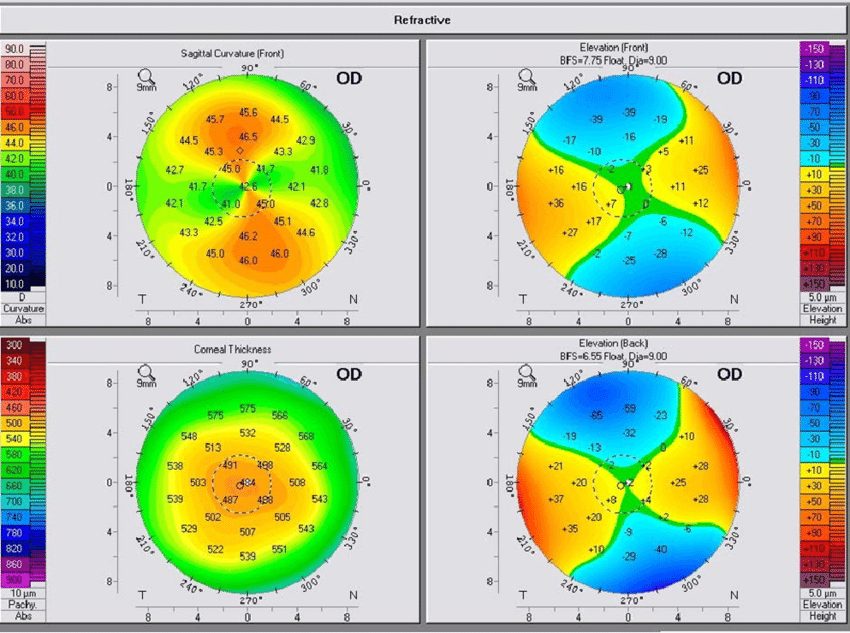Corneal Mapping
Learn about how Deltavision Optical Center uses Corneal Mapping
Corneal topography (Mapping), also known as photokeratoscopy or videokeratography, is a non-invasive medical imaging technique for mapping the surface curvature of the cornea, the outer structure of the eye. Since the cornea is normally responsible for some 70% of the eye’s refractive power, its topography is of critical importance in determining the quality of vision.
The three-dimensional map is therefore a valuable aid to the examining doctor and can assist in the diagnosis and treatment of a number of conditions; in planning and following refractive surgery such as LASIK; diagnosing corneal disease, such as Keratoconus. It is also used to assess the fit of contact lenses. Corneal topography extends the measurement range from the four points a few millimeters apart that is offered by keratometer to a grid of thousands of points covering the entire cornea. The procedure is carried out in seconds and is completely painless.

